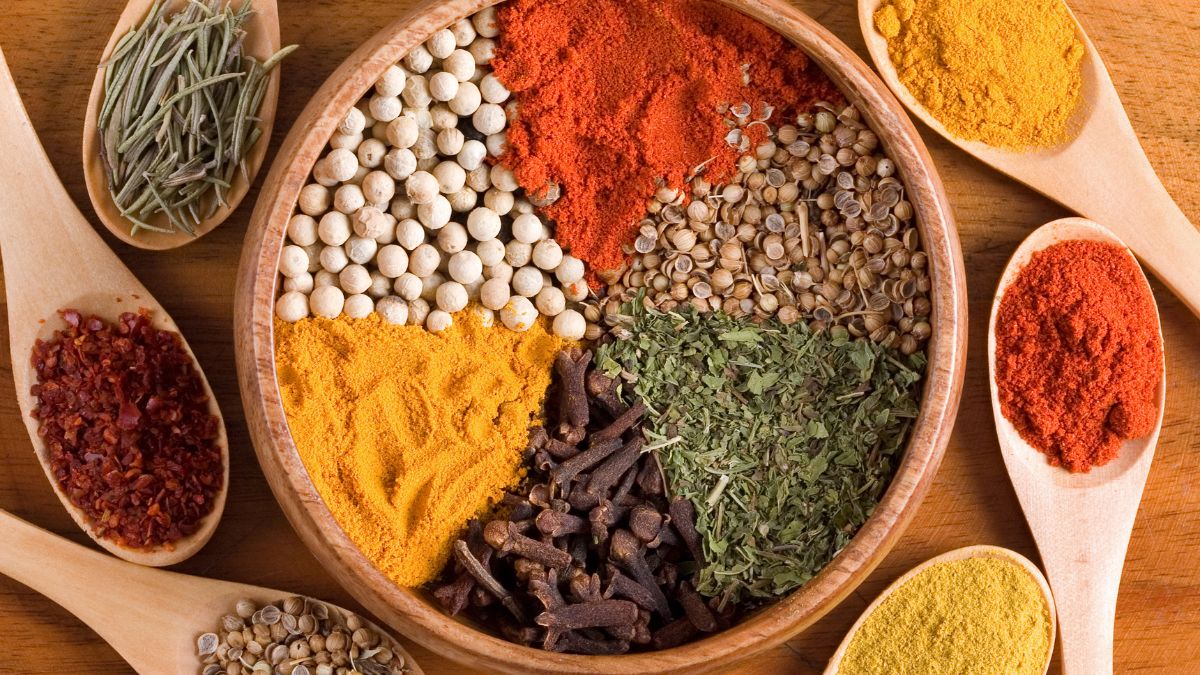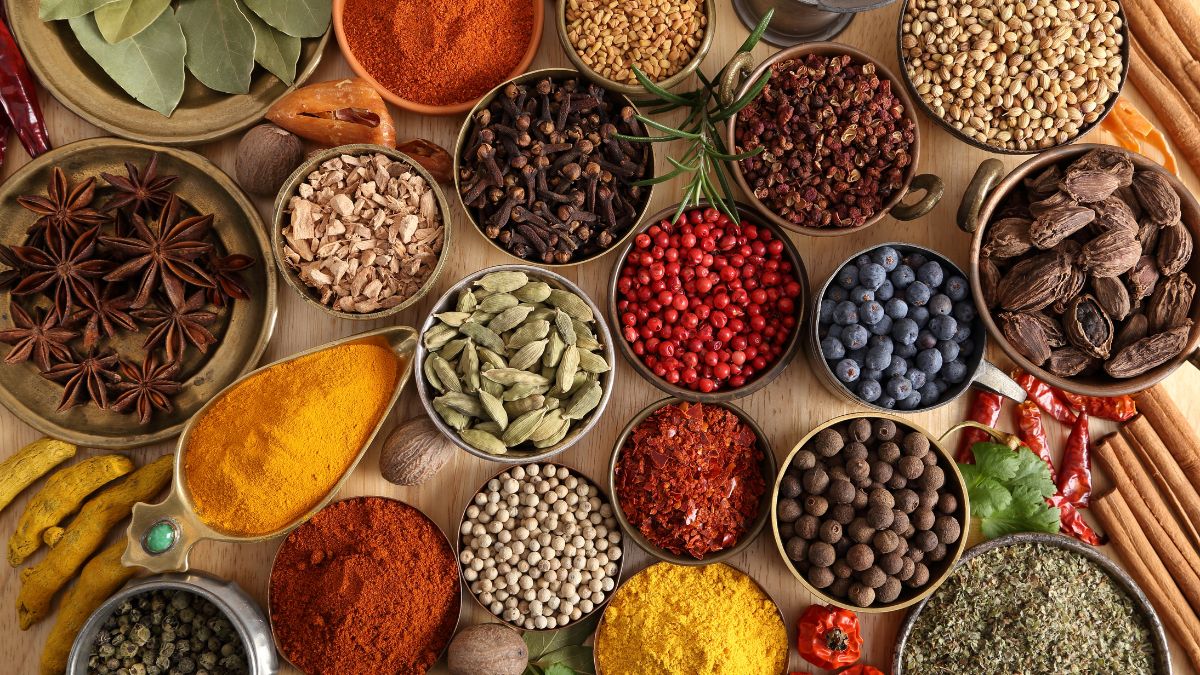Spice-Producing Countries: Spices have been an essential part of human culture, cuisine, and trade for centuries. They not only enhance the flavour of food but also provide medicinal, preservative, and aromatic properties. In 2025, certain countries dominate spice production globally, growing a wide range of spices such as black pepper, cardamom, turmeric, chilli, cloves, and vanilla. These countries play a crucial role in the global spice market, supporting exports, livelihoods, and international culinary traditions. Keep reading more about top spice-producing countries in the world.
Top 10 spice-producing countries in the world
1. India
India remains the largest spice-producing country in the world. It grows over 75 types of spices, with chilli being the most cultivated. Other major spices include black pepper, cardamom, turmeric, cumin, and coriander. States like Kerala, Karnataka, Tamil Nadu, and Andhra Pradesh are the top spice-producing regions. India’s spices are highly sought after worldwide, and the country dominates global spice exports, supplying markets across Asia, Europe, and North America. Spice farming in India supports millions of farmers and has a long-standing history dating back thousands of years.
2. China
China ranks second in global spice production, with ginger as its leading spice. The country also produces large quantities of star anise, Szechuan pepper, and cinnamon. Key cultivation areas include Guangxi, Yunnan, and Sichuan provinces. Chinese spices are essential ingredients in Asian cuisine and are widely exported, making China one of the top spice exporters globally. The government invests in modern farming methods and research to improve spice yield and quality.
3. Vietnam
Vietnam is the largest producer and exporter of black pepper in the world. Provinces like Dak Lak and Gia Lai in the central highlands provide optimal conditions for cultivation. Black pepper is Vietnam’s most important spice, and it supplies a significant portion of global demand. Vietnam has modern spice farming techniques and quality control measures to ensure its spices meet international standards. Vietnamese black pepper is highly valued for its pungency, aroma, and consistency.
4. Indonesia
Indonesia is globally recognized for cloves, which are its top spice. The country also produces nutmeg, cinnamon, and pepper. Key cultivation regions include the Maluku Islands and Sumatra. Indonesia’s spices have played a historic role in global trade, and the country continues to be a major player in the international spice market. Spice cultivation in Indonesia supports local communities and contributes significantly to export revenue.
5. Sri Lanka
Sri Lanka is famous for Ceylon cinnamon, regarded as one of the finest varieties in the world. Other spices include black pepper, cardamom, and cloves. The country’s spices are prized for their aroma, flavor, and quality. Sri Lanka remains a key spice exporter, with cinnamon and cardamom leading global markets. Traditional cultivation practices combined with modern processing ensure high-quality spice production.

6. Thailand
Thailand’s top spice is chilies, followed by garlic and white pepper. Regions like Chiang Mai, Lampang, and northern provinces are major spice-growing areas. Thai spices are essential for local cuisine and are widely exported. Thailand is one of the leading spice-producing countries in Asia, with spice farming contributing significantly to its agricultural economy. The country continues to expand production using sustainable farming practices.
7. Egypt
Egypt produces garlic as its main spice, along with chili and coriander. The fertile Nile Delta and Upper Egypt provide ideal soil and climate for spice cultivation. Egyptian spices are exported to Europe, the Middle East, and Asia. Egypt’s spice industry has grown steadily, making it one of the top spice-producing countries in Africa. Spice farming also supports local employment and traditional agricultural practices.
8. Brazil
Brazil’s most cultivated spice is black pepper, with chili, paprika, and nutmeg also grown. Key regions include Bahia and Pará. Brazil’s tropical climate allows for high-yield spice production, and the country exports spices to international markets. Brazilian spice cultivation is expanding with modern techniques and quality control measures, strengthening its position in the global spice market.
9. Myanmar
Myanmar’s top spice is ginger, with turmeric and chili also widely grown. Traditional cultivation methods are combined with modern approaches in some regions to improve quality and yield. Myanmar’s spices are increasingly exported to neighboring countries and beyond, contributing to the nation’s spice export industry. Ginger from Myanmar is valued for its flavor, aroma, and medicinal properties.
10. Madagascar
Madagascar is famous for vanilla, which is its most important spice. Cloves are also produced in significant quantities. The island’s unique soil and tropical climate produce high-quality spices that are highly sought after internationally. Madagascar remains a major player in the global spice market, particularly for natural vanilla, which is essential for food, cosmetics, and fragrance industries.

Interesting Facts About Spices
1. India Leads Global Spice Production
India produces the highest variety of spices worldwide, with chili as the most dominant crop. It remains the top supplier in the global spice market.
2. Indonesia’s Historical Importance
The Maluku Islands, or “Spice Islands”, were central to historic spice trade and remain major producers of cloves and nutmeg.
3. Vietnam Dominates Black Pepper
Vietnam produces over 30% of the world’s black pepper, making it the largest exporter globally.
4. Sri Lanka’s Premium Cinnamon
Ceylon cinnamon from Sri Lanka is considered the finest due to its aroma, flavor, and oil content.
5. Global Spice Trade Growth
The international spice market is growing steadily, driven by demand for organic spices, natural flavours, and international cuisine.
Read more: Top 10 Sandalwood-Producing Countries in the World
Comments
All Comments (0)
Join the conversation